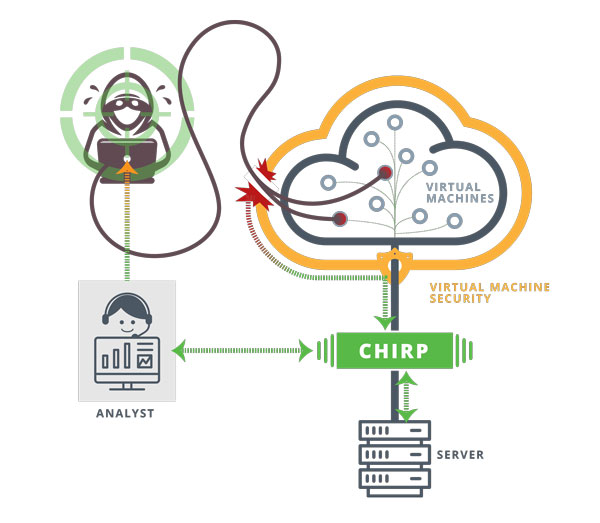The seventh annual Innovate New Mexico Technology Showcase gave researchers from institutions across the state the opportunity to pitch technologies to industry representatives and investors. Sandia sponsored the event this year, and two Labs researchers presented along with 10 scientists from six additional organizations. The showcase took place March 3 at the Sandia Golf Club.
“The purpose of this annual event is to highlight New Mexico researchers who are creating scientific solutions to meet and solve current challenges,” said Mary Monson, senior manager of business development. “They also have the chance to network with other labs and companies, get to know investors, and potentially create relationships that could lead to funding or partnerships.”
Cloud platform forensics
Sandia cybersecurity initiatives scientist Vince Urias presented about his team’s Cloud Hypervisor Forensics and Incident Response Platform, or CHIRP, a cloud-based platform that would enable analysts to collect evidence when adversaries attempt to gain access to unauthorized information through malicious online activity. The platform could provide information to incident responders in real time without disturbing the user environment or alerting the intruder.

One issue with cloud-based platforms is that there hasn’t been an established platform that can reduce security risks, Vince said. With CHIRP, analysts would be able to pinpoint suspicious activities, track and record attacker actions for forensic analysis and retrieve materials from the targeted machines automatically or on-demand. The features of the platform may also be leveraged to disrupt malicious copying, deleting, encrypting and relocating of data in a cloud-based environment.
Vince said CHIRP could increase cost savings for defense and industry users and improve intellectual property protection. Research for the platform was funded by the Laboratory Directed Research and Development program, and the project won a 2019 R&D 100 Award. A proof-of-concept has been developed, a patent has been filed, and a pilot of the platform has been tested. The technology is available for licensing, Vince said.
Making inductors 10x smaller
Electrical engineer Eric Langlois said nanoscale-enabled microinductors could benefit the defense, power electronics and aerospace industries and others. Inductors are components in electric or electronic circuits that store energy in a magnetic field when current flows through them.

The microinductor would use nanoscale-enabled magnetic material and be 10 times smaller than inductors made with current technology. Both the microinductor and material technologies, developed at Sandia, will be combined in an advanced integration scheme and enable performance improvements afforded by scaling to smaller dimensions, Eric said.
Active devices, or devices requiring an external power source for operation, have made tremendous strides in both performance and scaling, he said. In contrast, passive devices, like inductors and capacitors, have not kept up. Sandia technologies would help inductors catch up to other active devices.
Eric said the research was funded by the Laboratory Directed Research and Development program. His team created the proof-of-concept, filed intellectual property in the form of technical advances for 3D printing the microinductor molds and the novel material, and filed a patent for integrating the microinductor with the material to further improve performance. His team is looking for commercial partners, as well as internal and external funding to move the technology to the prototype stage.
Other Innovate New Mexico participants included inventors from the University of New Mexico, the Air Force Research Laboratory, Los Alamos National Laboratory, NASA-White Sands Test Facility and Johnson Space Center, New Mexico Tech and New Mexico State University.